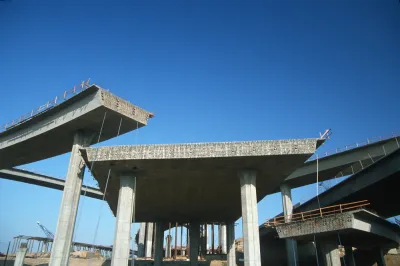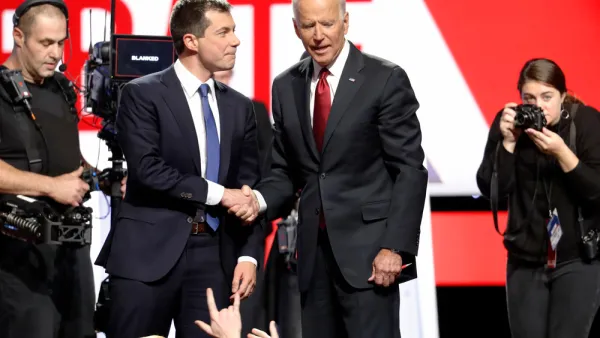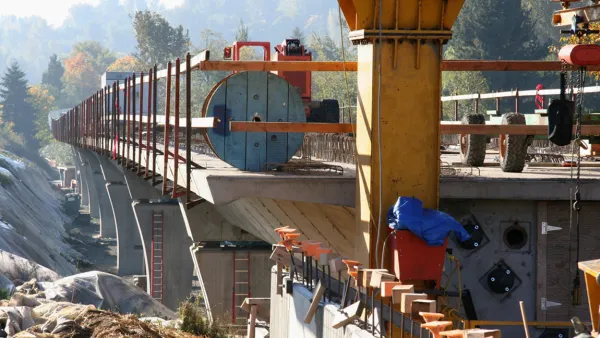While there are many reasons to break away from automobile dominance, the RAISE grant program is the only federal effort fully reflecting a public transit and active transportation priorities.

Laura Bliss reports for Bloomberg CityLab on the potential of the first round of RAISE grant program funding, announced on November 19 by the U.S. Department of Transportation, to make substantive changes to the pro-automobile priorities established by its predecessor program, the Trump administration's BUILD grant program, and over a century of U.S. transportation planning.
According to Bliss, the nearly $1 billion allotted by the RAISE grant program is much more focused on alternative transportation modes (i.e., not road expansion projects). "[O]nly about 5% of RAISE funds will support new roads, and 10% will go to projects that increase road capacity," according to Bliss. "The rest will flow to a mix of projects such as a freeway cap in Atlanta, a greenway project in Cincinnati, transit planning in Omaha, Missoula and Charlotte, and pedestrian and bike safety improvements in Denver, Oakland and Wilmington."
Bliss notes that the financial equation differs greatly from the Infrastructure Investment and Jobs Act (IIJA), which despite spending a record amount on alternative transportation projects also includes record amounts for road building (without the previously planned guardrails that would have made it more challenging for state departments of transportation from spending federal funding on the transportation status quo).
The article includes more insight from transportation experts about how to track and evaluate the use of both RAISE and IIJA funds in the coming months and years.
FULL STORY: Car-Free Transportation Gets Boost from U.S. Grant Program

National Parks Layoffs Will Cause Communities to Lose Billions
Thousands of essential park workers were laid off this week, just before the busy spring break season.

Retro-silient?: America’s First “Eco-burb,” The Woodlands Turns 50
A master-planned community north of Houston offers lessons on green infrastructure and resilient design, but falls short of its founder’s lofty affordability and walkability goals.

Delivering for America Plan Will Downgrade Mail Service in at Least 49.5 Percent of Zip Codes
Republican and Democrat lawmakers criticize the plan for its disproportionate negative impact on rural communities.

Test News Post 1
This is a summary

Test News Headline 46
Test for the image on the front page.

Balancing Bombs and Butterflies: How the National Guard Protects a Rare Species
The National Guard at Fort Indiantown Gap uses GIS technology and land management strategies to balance military training with conservation efforts, ensuring the survival of the rare eastern regal fritillary butterfly.
Urban Design for Planners 1: Software Tools
This six-course series explores essential urban design concepts using open source software and equips planners with the tools they need to participate fully in the urban design process.
Planning for Universal Design
Learn the tools for implementing Universal Design in planning regulations.
EMC Planning Group, Inc.
Planetizen
Planetizen
Mpact (formerly Rail~Volution)
Great Falls Development Authority, Inc.
HUDs Office of Policy Development and Research
NYU Wagner Graduate School of Public Service





























